Friendly Lithium

Are there any new developments in non-toxic, environmentally friendly batteries ?
The development of non-toxic and environmentally friendly batteries is a crucial step towards sustainable energy storage solutions. These advancements not only reduce the environmental impact of battery production and disposal but also promote cleaner technologies for various applications, from electric vehicles to renewable energy storage systems. Below are some notable recent developments in this field: Solid-state batteries promise higher energy densities than traditional lithium-ion batteries, allowing for longer usage times and smaller form factors. The absence of liquid electrolytes reduces the risk of leakage or combustion, making these batteries safer than their liquid counterparts. Solid-state batteries can potentially last longer and withstand more charge cycles than conventional batteries. Organic radical polymer batteries are made from organic materials, which are less harmful to the environment than those containing heavy metals. Many components of organic radical polymer batteries can biodegrade, reducing waste at the end of their life cycle. The use of organic materials could lead to lower production costs compared to batteries that require rare or expensive metals. Rechargeable aluminum batteries are abundant and recyclable, making them an attractive alternative to rarer metals like cobalt and lithium. Aluminum batteries demonstrate stable performance over multiple charge cycles. They could be suitable for high-power applications such as electric vehicles. Sodium-ion batteries have resources that are much more abundant than lithium, which could make sodium-ion batteries a cost-effective solution. Unlike lithium, sodium does not present the same thermal runaway risks, enhancing overall safety. Sodium-ion batteries are considered more environmentally friendly due to their non-toxic nature and easier recycling process. Zinc-air batteries are made from eco-friendly materials and have a high energy density, making them suitable for applications requiring long-lasting power sources. Zinc is inexpensive and widely available, which could reduce the overall cost of these batteries. In conclusion, as technology advances, the development of non-toxic and environmentally friendly batteries continues to gain momentum. From solid-state innovations to organic radical polymers and beyond, researchers are working on solutions that aim to minimize environmental impact while maximizing performance and safety. These advancements hold great promise for a future where our energy storage needs are met without compromising the health of our planet.
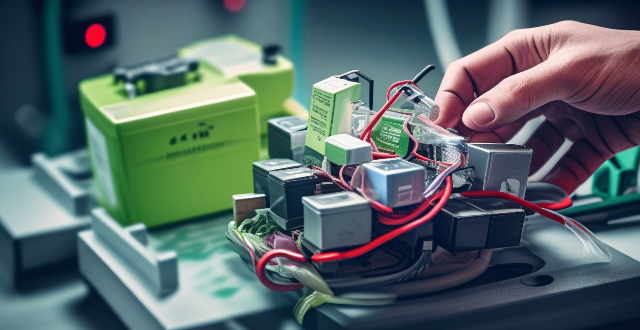
Can lithium batteries be recharged ?
Lithium batteries can be recharged, and the process involves the movement of lithium ions between the positive and negative electrodes. Proper charging practices ensure their longevity and safety.
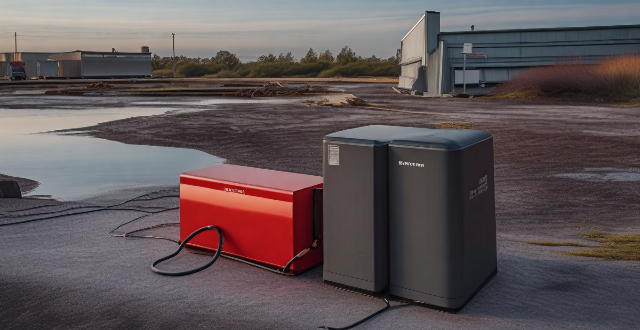
What are the advantages and disadvantages of using lithium iron phosphate batteries as power batteries ?
Lithium iron phosphate batteries are a popular choice for power batteries due to their longer lifespan, higher safety, environmental friendliness, and lower cost compared to other types of lithium-ion batteries. However, they also have some disadvantages such as lower energy density, slower charging speed, temperature sensitivity, and limited availability. Despite these drawbacks, lithium iron phosphate batteries remain a reliable and efficient option for many applications.

How can I properly dispose of a lithium battery ?
Disposing of lithium batteries requires special attention due to their chemical composition and potential environmental impact. Here's a step-by-step guide on how to do it right: 1. Find a Recycling Center: Look for local recycling centers or facilities that accept lithium batteries. Many cities have designated drop-off points or specific days for battery recycling. Automotive stores and electronics retailers also offer recycling services. 2. Prepare the Battery: Fully discharge the battery before disposal to reduce the risk of accidental fires during transport or at the recycling facility. If the battery has damage or exposed terminals, wrap it in plastic or place it in a sealed container to prevent short circuits. 3. Transport Safely: Keep the battery cool and separate from other waste. Never mail lithium batteries as they are classified as hazardous materials and prohibited from being sent through the postal service. 4. Drop Off the Battery: Double-check the recycling center's policies on lithium batteries before dropping off. Ask about the recycling process to understand the full lifecycle. 5. Consider Alternatives: Use rechargeable batteries whenever possible to reduce the number of batteries you dispose of. When purchasing new devices, consider those with more easily recyclable or biodegradable battery options. By following these steps, you ensure that your lithium batteries are recycled responsibly, minimizing their environmental impact and contributing to sustainable practices.
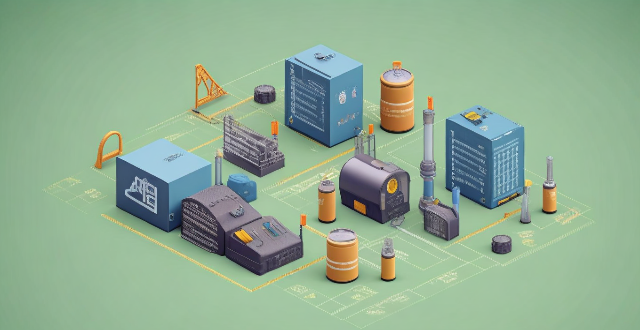
How do lithium batteries work ?
Lithium batteries work by using the chemical reaction between lithium ions and other materials to generate electricity. They consist of a cathode, anode, electrolyte, and separator. During charging, electrons flow from the cathode to the anode through an external circuit, causing lithium ions to move towards the anode and be stored there. During discharge, lithium ions move back to the cathode, releasing electrons in the process that provide power to a device. Lithium batteries have a high energy density, long lifespan, low self-discharge rate, and are used in various applications.

What are the benefits of using lithium batteries ?
Lithium batteries offer numerous benefits, including highLithium batteries offer numerous benefits, including highspan, low maintenance, safety They are ideal for portable electronics, electric vehicles, backup power systems, and more.
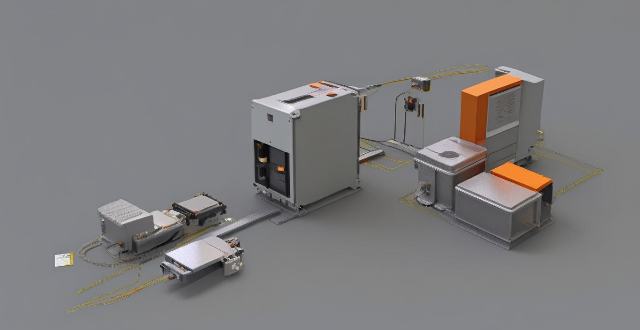
How does a lithium-ion power battery work ?
Lithium-ion power batteries work through the movement of lithium ions between the anode and cathode during charging and discharging, generating an electrical current to power devices. The process involves intercalation and deintercalation of ions in the electrodes, facilitated by an electrolyte and separator. Safety mechanisms and lifespan are key considerations for these widely used batteries.

Are lithium batteries safe to use ?
Lithium batteries have become an integral part of modern technology, powering a wide range of devices from smartphones to electric vehicles. However, concerns about their safety have been raised due to incidents of overheating and fires. In this article, we will explore the safety aspects of lithium batteries and provide guidance on how to use them safely. One of the main safety concerns with lithium batteries is the risk of overheating and catching fire. This can occur if the battery is damaged, improperly charged, or exposed to extreme temperatures. When a lithium battery overheats, it can cause a chemical reaction that leads to thermal runaway, which is a self-sustaining process that can result in a fire or explosion. Another safety concern associated with lithium batteries is the potential for chemical hazards. The chemicals used in lithium batteries can be toxic and harmful to human health if they are ingested, inhaled, or come into contact with skin or eyes. It is important to handle these batteries with care and dispose of them properly to avoid any potential risks. To minimize the risks associated with lithium batteries, it is essential to follow some basic safety tips: 1. Use genuine products from reputable manufacturers to ensure that the battery meets safety standards. 2. Avoid overcharging by not leaving your device charging unattended and avoiding using cheap chargers that may overcharge the battery. 3. Store your lithium batteries in a cool, dry place away from direct sunlight and extreme temperatures. 4. Inspect your batteries regularly for any signs of damage or swelling, and replace them if necessary. 5. Dispose of your old lithium batteries properly by taking them to a recycling center or following the manufacturer's instructions. 6. Follow the manufacturer's guidelines for your specific device and battery. 7. Keep lithium batteries out of reach of children as they may pose a choking hazard. 8. Use protective cases or covers for your devices to prevent damage to the battery. 9. Avoid dropping or mishandling your device as this can damage the battery and increase the risk of overheating. 10. Seek professional help if you notice any issues with your battery, such as swelling or leakage. In conclusion, while there are some safety concerns associated with lithium batteries, following these safety tips can help reduce the risks and ensure that you use them safely. By being cautious and responsible, you can enjoy the benefits of these powerful batteries without compromising your safety.

How can I maximize the lifespan of my lithium battery ?
Lithium batteries are widely used in various devices, from smartphones and laptops to electric vehicles. To ensure that your lithium battery lasts as long as possible, it's essential to follow some best practices for charging, storing, and using the battery. Here are some tips to help you maximize the lifespan of your lithium battery: 1. Avoid Overcharging 2. Maintain Proper Charging Levels 3. Store at Optimal Temperatures 4. Manage Battery Use 5. Software Updates 6. Physical Care

What is the lifespan of a lithium battery ?
The lifespan of a lithium battery is affected by various factors such as the type of battery, usage patterns, and environmental conditions. In general, most lithium batteries have a lifespan of 2-3 years or 300-500 charge cycles, whichever comes first. However, this can vary significantly based on the specific application and usage patterns. Different types of lithium batteries have different lifespans. For example, Lithium-ion batteries typically have a longer lifespan than Lithium-polymer batteries. Additionally, some newer types of lithium batteries, such as solid-state batteries, may have even longer lifespans than traditional lithium-ion batteries. How you use your lithium battery can also affect its lifespan. For example, if you frequently charge your battery to 100% and then discharge it completely, this can shorten its lifespan compared to if you only charged it to 80% and discharged it to 20%. Similarly, if you frequently expose your battery to high temperatures or cold temperatures, this can also shorten its lifespan. Finally, the environmental conditions in which your lithium battery is stored and used can also affect its lifespan. For example, if you store your battery in a hot or humid environment, this can shorten its lifespan compared to if you store it in a cool, dry environment. Similarly, if you frequently expose your battery to extreme temperatures or humidity levels while using it, this can also shorten its lifespan. To maximize the lifespan of your lithium battery, there are several things you can do: * Avoid exposing your battery to extreme temperatures or humidity levels. * Try to keep your battery's charge level between 20% and 80% as much as possible. * Use a high-quality charger that is designed specifically for your type of lithium battery. * If possible, try to use your device's built-in power management features to help regulate charging and discharging patterns.

How do lithium batteries compare to other types of batteries ?
The text compares lithium batteries (Li-ion and LiPo) with other types of batteries in terms of energy density, charge retention, lifespan, charging speed, safety, cost, and environmental impact. Lithium batteries are found to have high energy density, low self-discharge rates, a longer cycle life, and can be charged quickly. However, they are more expensive upfront and pose specific safety risks. Other batteries may be initially cheaper but require more frequent replacements and have different safety concerns. Overall, the advantages of lithium batteries often outweigh their drawbacks, making them the preferred choice for modern portable electronics and large-scale applications.

How do I choose eco-friendly cleaning products ?
This text provides a comprehensive guide on choosing eco-friendly cleaning products, emphasizing the importance of understanding eco-friendly labels, checking ingredient lists for harmful chemicals, opting for concentrated and reusable packaging options, supporting green brands, and considering homemade cleaners. By following these steps, consumers can make informed choices that contribute to a healthier planet and home environment.

What are some common applications for lithium batteries ?
Lithium batteries are widely used in various applications due to their high energy density, long lifespan, and lightweight nature. They power portable electronics like smartphones, laptops, and gaming devices; electric vehicles including cars, motorcycles, and bicycles; energy storage systems for solar power and backup supplies; medical devices such as pacemakers and monitors; aerospace and defense technologies like satellites and drones; tools and devices including power tools and wireless communications; wearable technology like smartwatches and AR/VR headsets; and outdoor and recreational equipment such as camping gear and flashlights. These batteries have transformed how we use our gadgets and vehicles, making them more efficient, lighter, and longer-lasting.

Can you recommend any eco-friendly sports equipment options ?
Eco-friendly sports equipment options include recycled yoga mats, bamboo skateboards, organic cotton gym clothes, recycled plastic outdoor gear, eco-friendly surfboards, biodegradable tennis balls, reusable water bottles, and sustainable running shoes.

What role do consumers play in supporting climate-friendly products ?
Consumers have a crucial role in promoting climate-friendly products through awareness, eco-friendly purchasing habits, advocacy, and lifestyle changes.

How do climate-friendly products contribute to sustainable development ?
The article discusses the importance of climate-friendly products in sustainable development. These products help reduce greenhouse gas emissions, conserve natural resources, support renewable energy sources, and encourage eco-friendly lifestyles. By using less energy or producing fewer pollutants during their production, use, and disposal, these products contribute to a healthier planet for future generations. Examples include energy-efficient appliances, electric vehicles, reusable water bottles made from recycled materials, bamboo toothbrushes, solar panels, wind turbines, hydroelectric generators, cloth shopping bags, and compostable food containers. As consumers become more aware of the environmental impact of their choices, they can make informed decisions that support a more sustainable future.

Are there any government incentives for producing or purchasing climate-friendly products ?
Governments worldwide have implemented various incentives to promote the production and purchase of climate-friendly products, such as tax breaks, subsidies, grants, and regulations. These initiatives aim to reduce greenhouse gas emissions and promote sustainable practices.

What are the benefits of using lithium-ion batteries in renewable energy systems ?
The benefits of using lithium-ion batteries in renewable energy systems include high energy density, long lifespan, low maintenance, fast charging, and high efficiency. These advantages make them an ideal choice for storing and distributing renewable energy.

Are there any eco-friendly luxury resorts ?
Eco-friendly luxury resorts are gaining popularity, offering a luxurious experience while minimizing environmental impact. These resorts implement sustainable practices such as using renewable energy sources, reducing water usage, and supporting local communities through their employment practices. Some of the top eco-friendly luxury resorts include Six Senses Laamu in the Maldives, Nayara Springs in Costa Rica, Amangiri in the USA, Soneva Fushi in the Maldives, and Banyan Tree Mayakoba in Mexico. By choosing to stay at one of these eco-friendly luxury resorts, travelers can contribute to protecting our planet while enjoying a memorable vacation.

Can you recommend family-friendly cruise options ?
This text provides recommendations for family-friendly cruise options, including Royal Caribbean International, Disney Cruise Line, Norwegian Cruise Line, and Carnival Cruise Line. Each cruise line offers unique amenities and activities that cater to families with children of all ages, making cruising an enjoyable experience for the whole family. The text also highlights the various features of each cruise line, such as family-friendly accommodations, kid-friendly entertainment, onboard pools, dining options, character encounters, kids clubs, family-friendly shows, spacious accommodations, recreational facilities, and affordable and fun cruise experiences.

Can you explain how battery technology works in electric cars ?
Battery technology is a crucial component of electric cars, determining their range, performance, and efficiency. The basic components of a battery pack include the anode, cathode, electrolyte, and separator. During charging, lithium ions move from the cathode to the anode via the electrolyte, while discharging involves the movement of lithium ions in the opposite direction. Key factors affecting battery performance include capacity, energy density, power density, cycle life, and temperature management. By optimizing these aspects, manufacturers aim to improve the overall capabilities of electric vehicles.

What factors affect the performance of a lithium battery ?
The performance of a lithium battery can be affected by temperature, charging rate, discharging rate, depth of discharge, age, and manufacturing quality. High temperatures and fast charging can damage the battery and reduce its lifespan, while low temperatures and slow charging can prolong the battery's lifespan but may not provide enough power for high-demand devices. High discharging rates can cause the battery to heat up and decrease in performance, while low discharging rates can prolong the battery's lifespan but may not provide enough power for high-demand devices. High DoD can lead to increased stress on the battery and a shorter lifespan, while low DoD can help prolong the battery's lifespan but may not be practical for devices that require a lot of power. Older batteries will have decreased capacity and performance, while newer batteries will have better performance and capacity. High-quality manufacturing processes can result in better performing batteries with longer lifespans, while low-quality manufacturing processes can result in poor performing batteries with shorter lifespans.

Can small businesses also offer climate-friendly products ?
Small businesses can offer climate-friendly products by adopting sustainable practices and eco-friendly alternatives. They can reduce their carbon footprint, meet customer demand for eco-friendly options, save costs, gain a competitive edge, and build reputation. They can source materials sustainably, design energy-efficient products with reduced packaging, make operational changes like using green energy, and promote education about sustainability. Despite challenges like higher costs, they can seek funding, build partnerships, and educate customers to overcome these obstacles.

Are climate-friendly products more expensive than regular ones ?
Climate-friendly products are becoming more popular, but there is a misconception that they are always more expensive than regular ones. The cost of these products can be influenced by factors such as manufacturing processes, materials used, and research and development costs. However, eco-friendly options may actually be less expensive in the long run due to energy efficiency, durability, and government incentives. It is important for consumers to consider both short-term and long-term costs when deciding whether to choose climate-friendly products.

What are some family-friendly cities for a weekend getaway ?
When planning a weekend getaway with your family, itWhen planning a weekend getaway with your family, it a destination that offers a mix it's essential to choose a destination that offers a mix of fun, educational, and relaxing activities for all ages. Here are some family-friendly cities that cater to the needs of both children and adults: Orlando, Florida; San Diego, California; Austin, Texas; Chicago, Illinois; and Nashville, Tennessee. These cities offer a range of activities such as theme parks, beaches, zoos, museums, outdoor adventures, music venues, historical sites, and green spaces. To plan a successful family getaway, research accommodations that offer kid-friendly amenities like pools or game rooms, plan age-appropriate activities in advance, pack essentials like sunscreen and snacks, and allow flexibility for spontaneity and relaxation.

Are there any eco-friendly or sustainable options for iPhone cases ?
Eco-friendly and sustainable options for iPhone cases include Pela Case made from plant-based materials, Ecotecture using recycled materials, and Casetify Re/Case made from recycled plastic bottles. Apple's trade-in program and recycling programs also promote sustainability by reducing e-waste. Some companies use eco-friendly packaging materials to reduce waste.
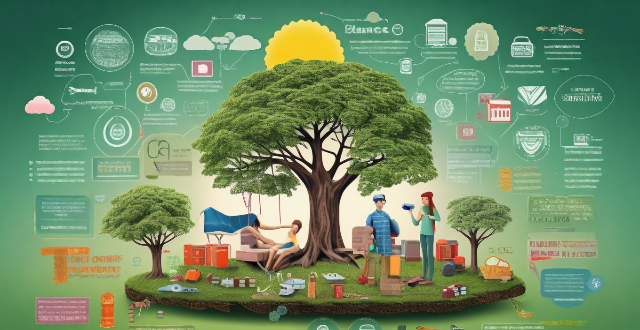
How can we encourage people to adopt eco-friendly habits in their daily lives ?
The article discusses ways to encourage eco-friendly habits, including education and awareness, incentives and rewards, and community involvement. It emphasizes the importance of raising awareness about environmental issues, teaching sustainable practices, offering discounts and rebates for eco-friendly products, providing tax breaks and grants for green initiatives, collaborating with local organizations, and fostering a sense of community through online platforms and events. The conclusion highlights the significance of adopting eco-friendly habits for the well-being of the planet and calls for collective action to create a brighter future.

Are there any eco-friendly sportswear brands that are also trendy ?
Sportswear has become a significant part of our daily lives, and many people are looking for eco-friendly options. However, finding sportswear brands that are both trendy and environmentally conscious can be challenging. In this article, we discuss some of the best eco-friendly sportswear brands that are also stylish and fashionable. Patagonia is a well-known brand that focuses on creating high-quality outdoor clothing and accessories using sustainable materials such as organic cotton, recycled polyester, and traceable down. Their sportswear line includes stylish jackets, pants, and shirts that are perfect for any outdoor activity. prAna is another popular brand that offers sustainable and stylish sportswear. They use organic cotton, hemp, and recycled materials to create their clothing, including comfortable leggings, joggers, and tank tops that are perfect for yoga or running. Adidas collaborated with Parley for the Oceans to create a sportswear line made from recycled ocean plastic. The collection includes shoes, jerseys, and shorts that are not only eco-friendly but also stylish and trendy. Reebok teamed up with Usain Bolt to create a sportswear line that is both eco-friendly and stylish. The collection includes tracksuits, t-shirts, and sneakers made from sustainable materials such as recycled polyester and organic cotton. Lululemon recently partnered with Girlfriend Collective to create a sportswear line made from recycled water bottles. The collection includes leggings, bras, and shorts that are not only eco-friendly but also stylish and comfortable. In conclusion, there are several eco-friendly sportswear brands that are also trendy. These brands use sustainable materials to create stylish and comfortable clothing that is perfect for any outdoor activity. By choosing these brands, you can make a positive impact on the environment while staying fashionable.

Are there any shopping apps specifically designed for eco-friendly products ?
There are several shopping apps available that are specifically designed for eco-friendly products. These apps allow users to browse and purchase products that are sustainable, organic, and environmentally friendly. Some of the popular shopping apps for eco-friendly products include EcoShopper, GoodOnYou, and Think Dirty. EcoShopper is a shopping app that offers a wide range of eco-friendly products, including organic food, natural beauty products, and sustainable fashion. The app allows users to search for products based on their specific needs and preferences, making it easy to find sustainable alternatives to everyday items. GoodOnYou is a fashion app that rates brands based on their sustainability and ethical practices. The app provides users with information about a brand's environmental impact, labor practices, and animal welfare policies, allowing them to make more conscious purchasing decisions. Think Dirty is a beauty app that helps users identify the ingredients in their cosmetics and personal care products. The app provides information about the safety and environmental impact of each ingredient, allowing users to make more informed decisions about their purchases. In conclusion, these shopping apps are specifically designed for eco-friendly products, making it easier for consumers to make more conscious purchasing decisions. By using these apps, users can support sustainable brands and reduce their environmental impact while still enjoying high-quality products.

Can using climate-friendly products really make a difference in combating climate change ?
Can Using Climate-Friendly Products Really Make a Difference in Combating Climate Change? Understanding Climate-Friendly Products: Clarification of what constitutes climate-friendly products, which are designed to have a lower environmental impact than their conventional counterparts. Individual Actions and Collective Impact: Small Changes, Big Results: The cumulative effect of individual actions can lead to significant environmental benefits, such as reduced carbon emissions and lowered resource depletion. Market Influence: Consumer choices drive market demand for eco-friendly products, encouraging businesses to adopt sustainable practices. Limitations and Considerations: Scale of Impact: Personal choices are essential but must be part of a broader strategy for addressing climate change effectively. False Sense of Accomplishment: Risk of individuals feeling they have done enough by using a few eco-friendly products. Cost and Accessibility: Potential barriers to adoption due to higher costs or limited availability. Conclusion: Using climate-friendly products can make a difference in combating climate change, but it is one piece of a larger puzzle that requires widespread adoption, innovation, and systemic change.